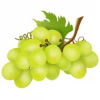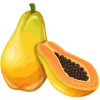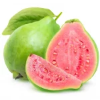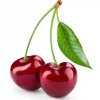Are you curious about the names of different fruits in English? Well, you’re in the right place! In this blog post, we will explore “10 Fruits Name in English.” Learning the names of fruits is fun and useful for everyday life. Whether planning a trip to the grocery store, making a fruit salad, or just conversing with friends, knowing these 10 fruits’ names will come in handy.Fruits are not only colourful and tasty but also packed with vitamins and nutrients that are good for your health. So, let’s embark on this exciting journey and discover the English names of some common and delicious fruits. By the end of this blog post, you’ll be able to impress your friends and family with your knowledge of “10 Fruits Names in English.” Let’s get started!
10 Fruits Name in English and Hindi
| Sr No. | Fruit Pictures | English Fruits Name | Hindi Fruits Name |
| 1 |  | Apple | सेब (Seb) |
| 2 |  | Banana | केला (Kela) |
| 3 |  | Orange | संतरा (Santra) |
| 4 |  | Mango | आम (Aam) |
| 5 |  | Grapes | अंगूर (Angur) |
| 6 |  | Pineapple | अनानास (Ananas) |
| 7 |  | Strawberry | स्ट्रॉबेरी (Strawberry) |
| 8 |  | Watermelon | तरबूज (Tarbooj) |
| 9 |  | Papaya | पपीता (Papita) |
| 10 |  | Guava | अमरूद (Amrood) |
10 Fruits Name in English, Definition and Examples
Apple:
- Definition: A round or oval fruit with crisp flesh and skin that can be red, green, or yellow.
- Example: “She enjoyed a juicy red apple for a snack.”
Banana:
- Definition: A long, curved fruit with a yellow or green peel and soft, sweet flesh.
- Example: “He made a banana smoothie for breakfast.”
Orange:
- Definition: A citrus fruit with a bright orange colour and sweet-tangy flavour.
- Example: “She peeled an orange and ate the juicy segments.”
Strawberry:
- Definition: A small, red, or pink fruit with tiny seeds on the surface.
- Example: “He picked fresh strawberries from the garden.”
Grapes:
- Definition: Small, round, or oval fruits often arranged in clusters on a vine.
- Example: “She savoured the sweet taste of grapes.”
Pineapple:
- Definition: A tropical fruit with a tough, spiky outer skin and sweet, juicy, yellow flesh.
- Example: “They had pineapple slices on their pizza.”
Mango:
- Definition: A juicy, tropical fruit with a sweet and slightly tangy taste.
- Example: “The ripe mango was a refreshing summer treat.”
Kiwi:
- Definition: A small, fuzzy fruit with green flesh and tiny black seeds.
- Example: “She added slices of kiwi to her fruit salad.”
Cherry:
- Definition: A small, round fruit that can be red, black, or yellow, with a pit inside.
- Example: “He enjoyed a bowl of fresh cherries for dessert.”
Watermelon:
- Definition: A large, green-skinned fruit with sweet, juicy, pink or red flesh.
- Example: “They had a picnic and shared watermelon slices on a hot day.”
10 Delicious English Fruit Names You Should Try
Apple:

Apples are one of the most popular fruits worldwide. Depending on the variety, they come in various flavours, such as sweet, tart, and crisp. Apples are versatile and can be eaten fresh, baked into pies, or turned into apple sauce.
Banana:

Bananas are a convenient and nutritious fruit. They are known for their potassium content, which helps regulate blood pressure. Bananas are sweet and can be eaten as a snack or added to smoothies.
Cherry:

Cherries are small, round fruits with a sweet or tart taste. They are often used in desserts like pies and tarts. Cherries are also available in different colours, such as red, black, and yellow.
Strawberry:

Strawberries are juicy and sweet berries, often enjoyed fresh or in desserts like strawberry shortcakes. They are rich in vitamin C and antioxidants.
Mango:

Mangoes are tropical fruits known for their sweet and juicy flesh. They can be eaten fresh, added to fruit salads, or blended into refreshing mango smoothies.
Grape:

Grapes come in various colours, including green (seedless), red, and purple. They are commonly enjoyed as a quick snack or used to make wine, raisins, and grape juice.
Pineapple:

Pineapples are tropical fruits with a sweet and tangy flavour. They are commonly used in fruit salads, cocktails, and toppings for pizzas and desserts.
Watermelon:

Watermelons are known for their hydrating and refreshing qualities. They have juicy, sweet flesh and are perfect for hot summer days. Watermelon slices and watermelon salads are popular choices.
Blueberry:

Blueberries are small, round, and packed with antioxidants. They are often used in baking, added to pancakes, or simply enjoyed as a snack.
Raspberry:

Raspberries are delicate, red or black berries with a sweet and slightly tangy taste. They are used in various desserts, jams, and sauces and are high in fibre and vitamin C.
List of Tropical Fruit Names
- Mango: Known as the “king of fruits,” mangoes are sweet juicy, and come in various varieties. They are commonly eaten fresh, sliced, or blended into smoothies.
- Pineapple: Pineapples have a sweet and tangy flavor. They are used in salads, fruit cocktails, and as a topping for desserts.
- Papaya: Papayas have orange flesh and a sweet, tropical taste. They are often eaten fresh or used in fruit salads.
- Banana: Bananas are a versatile fruit with a mild, sweet flavor. They can be eaten fresh, added to cereals, or used in baking.
- Coconut: Coconuts provide coconut water and meat. Coconut water is a hydrating drink, while coconut meat is used in various dishes and desserts.
- Guava: Guavas are tropical fruits with a sweet and slightly tart taste. They can be eaten fresh or used in jams and jellies.
- Passion Fruit: Passion fruits have a unique flavor, combining sweetness and tartness. They are often used in juices and desserts.
- Lychee: Lychees have a sweet and floral flavor with a translucent flesh. They are eaten fresh or used in cocktails and desserts.
- Dragon Fruit: Dragon fruits have bright pink or white flesh speckled with black seeds. They are mildly sweet and commonly used in fruit salads and smoothies.
- Kiwi: Kiwis are small, green fruits with sweet and slightly tart flesh. They are often eaten with the skin or used in fruit salads.
- Avocado: Avocado has creamy, green flesh and is used in savory dishes like guacamole and salads. It is technically a berry.
- Jackfruit: Jackfruits are large and have a sweet, tropical flavor. They can be used as a meat substitute in vegetarian dishes.
- Durian: Durians are known for their strong odor, but they have sweet, custard-like flesh. They are often loved or disliked for their unique taste.
- Plantain: Plantains are similar to bananas but are typically cooked before eating. They can be fried, boiled, or baked.
- Breadfruit: Breadfruit has starchy flesh and is used in cooking, often roasted or fried. It has a potato-like texture.
- Rambutan: Rambutans have hairy red or yellow skin and sweet, juicy flesh. They are eaten fresh.
- Longan: Longans are related to lychees and have translucent flesh with a sweet and floral flavor. They are eaten fresh.
- Tamarind: Tamarind pods contain a sour pulp used in cooking and making tamarind paste. It adds tartness to dishes.
- Pawpaw: Pawpaws have a sweet, custard-like flesh and are native to North America. They are often eaten fresh.
- Starfruit: Starfruits have a unique shape and a sweet, slightly tangy taste. They are sliced and eaten fresh.
- Soursop: Soursop has spiky green skin and sweet, creamy flesh. It is often used in smoothies and desserts.
- Mangosteen: Mangosteens have a sweet and tangy flavor. They are known as the “queen of fruits” and are eaten fresh.
- Chayote: Chayotes have a mild flavor and are used in salads, soups, and stir-fries. They have a crisp texture.
- Feijoa: Feijoas have a unique, aromatic flavor resembling a mix of pineapple and guava. They are eaten fresh or used in jams.
- Sapodilla: Sapodillas have grainy, sweet flesh with a flavor reminiscent of pear and brown sugar. They are eaten fresh.
List of Citrus Fruit Names
- Orange: Oranges are among the most popular citrus fruits known for their sweet, juicy, and tangy flavour. They are a rich source of vitamin C and are often eaten fresh or juiced.
- Lemon: Lemons have a tart, acidic flavour and are prized for their juice and zest. They are used in cooking, baking, and making beverages like lemonade. Lemons are also a good source of vitamin C.
- Lime: Limes are similar to lemons but are smaller and often have a more intense tartness. They are used in cooking, garnishing drinks, and making lime juice.
- Grapefruit: Grapefruits are larger citrus fruits with a sweet and slightly bitter taste. They come in various varieties, including pink and white. Grapefruits are rich in vitamin C and are often consumed for health benefits.
- Tangerine: Tangerines are small, sweet citrus fruits that are easy to peel. They are popular as a snack and often in salads and desserts.
- Mandarin Orange: Mandarin oranges, such as clementines and satsumas, are small, sweet, and easy to peel. They are commonly enjoyed as a snack during the winter months.
- Clementine: Clementines are a type of mandarin orange known for their sweet and seedless segments. They are a favourite winter fruit.
- Kumquat: Kumquats are tiny citrus fruits that can be eaten whole, including the peel. They have a sweet outer skin and tart inner flesh.
- Pomelo: Pomelos are one of the largest citrus fruits with a mild, sweet flavour. They are often used in salads and desserts.
- Calamondin: Calamondins are small, sour citrus fruits commonly used for making preserves and flavouring dishes.
- Yuzu: Yuzu is a Japanese citrus fruit known for its unique flavour, a blend of lemon, lime, and grapefruit. It’s used in cooking, particularly in Asian cuisine.
- Citron: Citrons are large, bumpy citrus fruits with a thick, fragrant rind and minimal flesh. They are primarily used for their zest in cooking and for making candied citron peel.
- Bergamot Orange: Bergamot oranges are small, fragrant citrus fruits primarily known for their use in flavouring Earl Grey tea. They have a unique and intense citrus aroma.
- Khasi Papeda: Khasi Papeda is a wild citrus fruit native to Southeast Asia. It has a sour taste and is not commonly cultivated but is occasionally used in local cuisine.
- Buddha’s Hand: Buddha’s Hand is a unique citrus variety with multiple yellow finger-like segments that radiate from a central base. It has a strong lemon fragrance and is often used as a natural air freshener or for zesting.
- Finger Lime: Finger limes are elongated citrus fruits with small juice-filled pearls. They come in various colours and are often used as a garnish in gourmet dishes.
- Blood Orange: Blood oranges have a deep red or crimson flesh due to the presence of anthocyanin pigments. They have a sweet and tangy flavour and are used in salads, desserts, and beverages.
- Seville Orange: Seville oranges are bitter oranges often used in making marmalade and for flavouring liqueurs.
- Satsuma Orange: Satsumas are sweet, seedless mandarin oranges that are easy to peel. They are commonly enjoyed as a snack.
- Tangelo: Tangelos are hybrids of tangerines and grapefruits. They have a sweet and tangy flavour and are often eaten fresh or used in salads.
How We Can Grow Fruit At Home In Easy Steps
- Strawberries: Strawberries are ideal for home gardens, especially in containers or hanging baskets. Plant strawberry runners or young plants in well-draining soil with good sunlight. Keep the soil consistently moist and mulch to suppress weeds.
- Tomatoes: Tomatoes are popular for home gardening and can be grown in pots or garden beds. Plant tomato seedlings in rich, well-drained soil with full sunlight. Provide support for the plants as they grow and water consistently.
- Blueberries: Blueberries thrive in acidic soil, so consider growing them in containers with suitable soil mix. They require well-draining soil and partial sunlight. Regular pruning helps maintain the shape and health of blueberry bushes.
- Raspberries: Raspberries can be grown in the backyard with trellises or supports for the canes. Plant raspberry canes in fertile, well-drained soil with full sunlight. Prune old canes to encourage new growth and fruit production.
- Lemons: Dwarf lemon trees are suitable for growing in pots or containers indoors or on a patio. Use well-draining potting soil and provide plenty of sunlight. Water consistently and protect from frost during winter.
- Apples: Dwarf apple trees are excellent for small gardens. Plant them in well-drained soil with full sun. Prune regularly to maintain shape and encourage fruit production.
- Cherries: Dwarf cherry trees can also be grown in containers or small garden spaces. Plant them in well-draining soil with good sunlight.Prune to keep the tree manageable and promote fruiting.
- Peaches: Dwarf peach trees work well in containers or small gardens. Plant them in fertile, well-drained soil with full sunlight. Prune for shape and fruit production.
- Figs: Fig trees can be grown in pots or in-ground. Use well-draining soil and place them in a sunny spot. Prune to control size and shape.
- Grapes: Grapes are suitable for trellises or arbors. Plant grapevines in well-drained soil with full sunlight. Prune to control growth and improve fruit quality.
- Blackberries: Blackberries can be grown in small spaces with trellises. Plant them in well-draining soil with good sunlight. Prune to maintain shape and encourage fruiting.
- Pears: Dwarf pear trees are suitable for home gardens. Plant them in well-drained soil with full sunlight. Prune for shape and fruit production.
- Kiwi: Kiwi vines can be grown on trellises or arbors. Plant them in well-draining soil with plenty of sunlight. Prune to manage growth and encourage fruiting.
Conclusion:
As we conclude our exploration into the world of growing fruit at home, it’s evident that cultivating your own fruit can be an incredibly satisfying and fruitful endeavor, both literally and figuratively. Whether you’re a seasoned gardener or just beginning to explore the joys of tending to plants, the ability to grow fresh, flavorful fruits right at home offers a multitude of benefits.
Not only does home fruit cultivation provide you with a bountiful harvest of delicious, healthy treats, but it also connects you to nature in a meaningful way. Watching your fruit trees and plants blossom, flourish, and bear fruit is a gratifying journey filled with valuable lessons about patience, care, and the cycles of life.
What are 10 easy fruit names?
Easy-to-remember fruit names include apples, bananas, oranges, grapes, strawberries, lemons, peaches, plums, pears, and cherries.
What is the 10 fruit name of India?
India boasts a rich variety of fruits, including mangoes, bananas, guavas, papayas, oranges, apples, pomegranates, grapes, jackfruits, and custard apples.
What are the 10 fruits in English?
Common English fruits are apples, pears, oranges, grapes, cherries, strawberries, lemons, limes, peaches, and plums.
What are 10 best fruits?
The best fruits are subjective, but popular choices include apples, bananas, berries, mangoes, oranges, grapes, watermelons, and pineapples.
What is a 10-letter fruit?
The “watermelon” is a 10-letter fruit known for its refreshing taste and juicy flesh.
What are 40 fruits?
Examples of 40 fruits include mangoes, blueberries, avocados, raspberries, kiwis, guavas, and papayas.
What are the 12 types of fruit?
There are many fruit types, including berries, citrus fruits, tropical fruits, stone fruits, melons, and more.
What are the 12 fruits of what?
The “12 fruits of the Holy Spirit” is a concept in Christianity, representing spiritual virtues, not literal fruits.
What is the 9 of fruits?
The “9 of fruits” is not a common phrase; it may refer to a specific context or list of fruits.
What are the 4 main fruits?
Apples, oranges, bananas, and grapes are often considered four of the most commonly consumed fruits globally.
Is it 12 fruits or 13 fruits?
The reference to 12 or 13 fruits may vary depending on cultural, religious, or symbolic contexts.

Dilip Kumar De is a highly experienced professional with a 40-year tenure as the Head of Department in Botany. He holds a Research Doctorate and a Master of Science degree in Botany/Plant Biology from the University of Calcutta. Dilip is a skilled Botanist, Plants Specialist, Teacher, and Lecturer, impacting numerous students throughout his career.
His expertise isn’t limited to academics; Dilip is also an adept leader, managing multicultural teams and emphasizing effective communication between parents and teachers. Proficient in Bengali, English, and Hindi, he has a strong ability to connect with diverse audiences.
Since December 2004, Dilip has been self-employed, showcasing his entrepreneurial spirit in the field of Botany. His dedication to education and community development is evident through his non-profit work. His journey is a testament to his unwavering dedication to Botany, higher education, and leadership, leaving a significant mark in his field.


